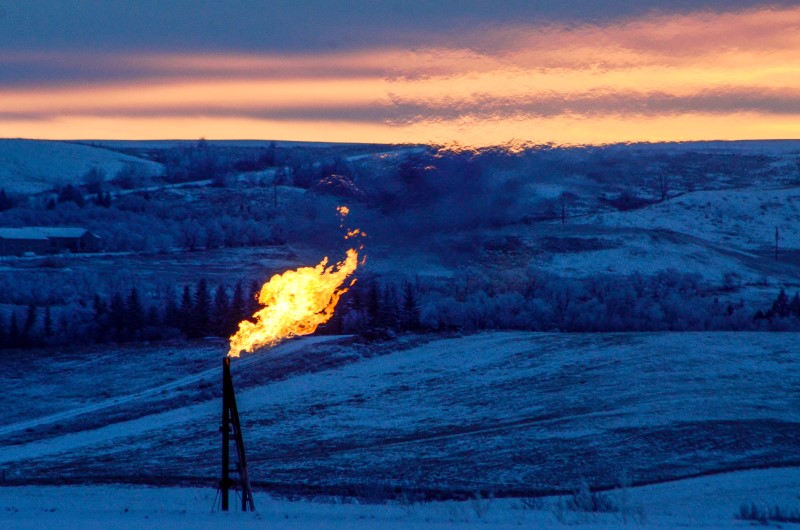(Reuters) - U.S. utilities likely injected a larger-than-normal 87 billion cubic feet (bcf) of natural gas into storage last week as production held near record levels and heating demand dropped with warmer-than-usual weather, according to a Reuters poll on Wednesday.
The build for the week ended April 12 compared with a decline of 34 bcf during the same week a year ago and a five-year average injection of 21 bcf for the period.
Utilities added 29 bcf to storage in the previous week ended April 5.
The U.S. Energy Information Administration will release its weekly storage report at 10:30 a.m. EDT (1430 GMT) on Thursday.
If analyst estimates are on target, the increase would boost stockpiles to 1.242 trillion cubic feet (tcf), which would still be the lowest for the week since 2014.
That would be about 5 percent below the same week a year ago and about 25 percent below the five-year average. The amount of gas in storage has remained below the five-year average since September 2017.
The weather was warmer than normal last week with 58 heating degree days (HDDs) versus a 30-year normal of 85 HDDs for the period. There were 114 HDDs in the same week a year ago.
HDDs measure the number of degrees a day's average temperature is below 65 Fahrenheit (18 Celsius) and are used to estimate demand to heat homes and businesses.
Output in the Lower 48 U.S. states, meanwhile, averaged 88.6 bcfd during the week to April 12, shy of the all-time daily high of 90.2 bcfd hit on March 29, according to Refinitiv Eikon data.
Reuters polled 18 analysts, with estimates ranging from injections of 68 bcf to 99 bcf, and a median build of 89 bcf.
Early estimates for the week ending April 19 ranged from injections of 65 bcf to 91 bcf, with an average build of 87 bcf.
That compares with a decline of 20 bcf for the same week last year and a five-year average increase of 47 bcf.
